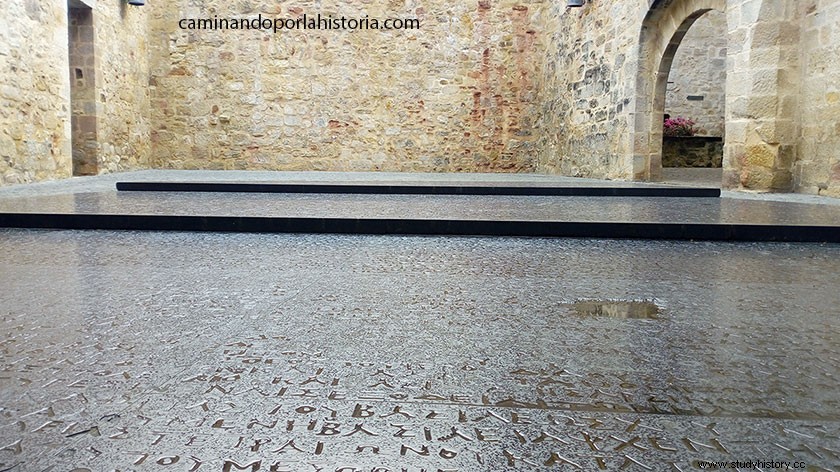
Today in Walking through history we travel to the small town of Figeac, located in the medieval French department of Lot, to discover a curious museum that will transport us to ancient Egypt and all those places where written history was born.
To better understand the origin of this museum, we traveled to Egypt, on a hot morning in July 1799, specifically to Fort Julien near the town of Rashid. The reason, to observe how the soldiers of the French detachment led by Pierre François Bouchard, come across a large slab of 760 kg, dark in color with writing on one of its sides. While that same day in Figeac, a nine-year-old boy named Jean-François spent his idle hours fascinated by the images of the books that arrived from Egypt, in the back of his father's bookstore. Surely that child did not know that the discovery in African lands was going to change his life forever.
At the beginning of the 19th century, the destinies of the great slab and the child took opposite paths. On the one hand, in the year 1800, at the age of ten, Jean-François Champollion moved with his older brother to Grenoble, the reason seems to be the closure of the local Figeac school. In Grenoble the young Champollion begins his studies aimed at satisfying his curiosity about the past.
While the one called by Napoleon's men, Piedra Rosseta, was transferred to the Egyptian Institute in Cairo, upon its arrival the experts realized its enormous possibilities. Written in three languages; in the upper part the Egyptian hieroglyphs, in the central demotic, and in the lower part the Greek of the Ptolemaic era. While the experts were working on it, the war between the British and French continued abroad, the result with the victory of the former over Napoleon's troops will mark the fate of the Stone. In February 1802 it was landed in the British port of Portsmouth, from there to travel to the British Museum in London, where by the way it is still the most visited piece.
It will not be until the period between 1807-1808 when the young Frenchman and the Rosseta Stone cross paths. At that time Jean-François was already studying in Paris between the famous Collège de France and the Parisian School of Oriental Languages. It was in this context that some transcribed copies of the Rosseta Stone came into his hands, starting from that moment the race to decipher those hieroglyphs that covered the most significant buildings of Ancient Egypt.
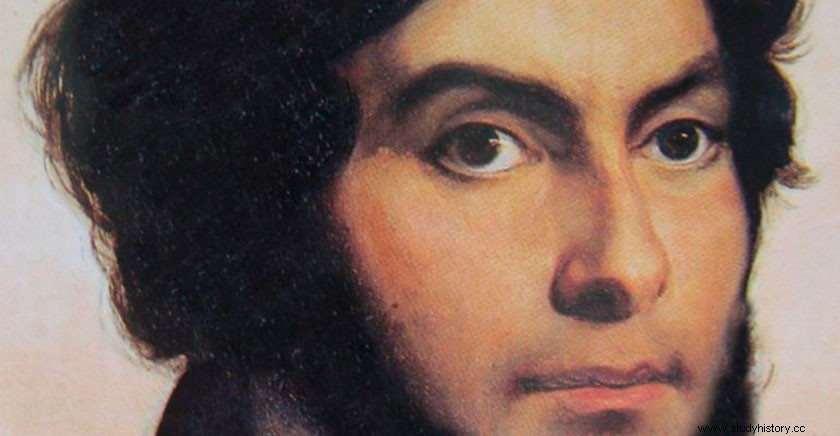
Champollion
Finally in 1822 Champollion hit on the solution. This was never absent from great controversies between the different actors that intervened in the deciphering of the Rosseta Stone. Of all of them, Thomas Young, a contemporary English scientist of Champollion, has gone down in history. Current historiography has resolved the mess, assigning the French the merits of decipherment, to make him the father of Egyptology studies. Meanwhile, the English have the consolation of having laid the foundations, through their first hypotheses about the reading of hieroglyphs, so that Champollion will present us the complete translation in September of that year 1822.
But for his work to be complete, Jean-François Champollion had to travel to Egypt. In 1828, together with his friend and most outstanding student Ippolito Rosellini, they headed for the land of the Pharaohs, financed by the Duke of Tuscany himself and by the current French King, Charles X. They did not travel alone, but at the head of an expedition formed by the most outstanding experts in different subjects such as drawing, medicine or history.
After the Mediterranean crossing they landed in Alexandria, where they encountered the stumbling blocks of the Turkish bureaucracy, despite the fact that the trip was delayed a few months, the expedition was finally able to cross the most various corners of Egyptian culture. It is easy to imagine what went through Champollion's mind during those years, El Cario, the pyramids of Gizeh, Memphis, Saqqara or the famous city of Akhenaten, Tell el-Amarna, went from the books he had read as a child to being just in front of your eyes. Two years later, on the way back to France, in the Frenchman's suitcase was the confirmation that all his hypotheses were true, the decipherment of the Rosseta Stone, put in the hands of the world the knowledge of the ancient Egyptian culture.
The Champollion House Museum in Figeac.
Only two years after returning from Egypt, Champollion died in Paris, despite being a young man, 41 years old, health was his unfinished business during the life of the. Not even in the last days did he find the full recognition of society for the magnificent discovery of him.
It will take more than a century for his hometown to begin the well-deserved tribute. In 1977 work began on the adaptation of the house where Champollion was born, the first museum will house the life of Figeac's genius, with many of the elements and materials that he brought from his expedition to Egypt, it was inaugurated in 1986 by the President of the French Republic, François Mitterrand.
A few years later, in commemoration of the bicentenary of Champollion's birth, the rear square of the museum building was adapted, undoubtedly the playground of our protagonist. It is a small enclosure presided over by a recreation of the Rosseta Stone made of black granite and that practically with its 11×8 covers the entire floor of the square, together with the background offered by the Gothic windows, give the place a special magic. . It was the work of the North American conceptual artist Joseph Kosuth, and the square is called "the place of writings".
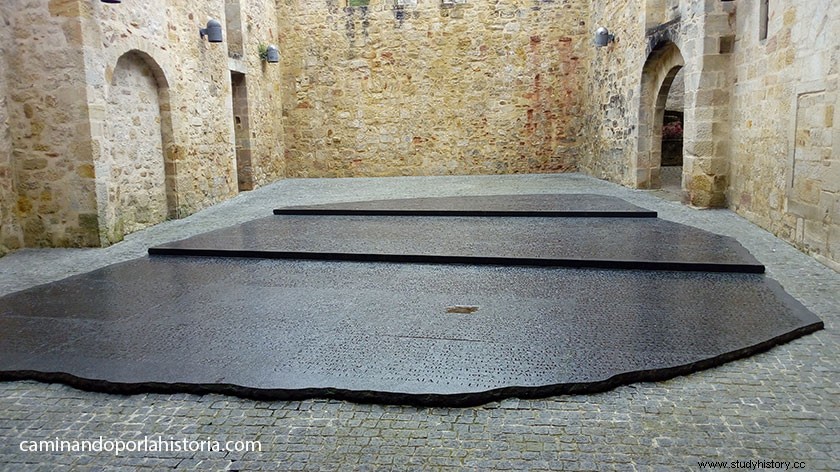
The square of the scriptures in Figeac
Now yes, in 1994 the Figeac authorities bought the buildings adjoining the original Champollion house for the expansion of the first museum. In such a way that in the summer of 2007 the current building was inaugurated, a place with a name and surname; Museo Champollion, the writings of the world . A unique space for lovers of ancient history, together with the objects from the first museum, there are now different rooms that have been added to the project.
The traveler who arrives there will be able to participate in a journey through the world of writing, not only ancient Egypt, as Mesopotamia, China, or the culture of the Mayans are present in the museum. The rest of the rooms do not forget some essential elements that men have been getting, and invented to favor communication between them. From the enigmatic language of signs present in many cultures, to the invention of two essential elements such as the alphabet and the book.
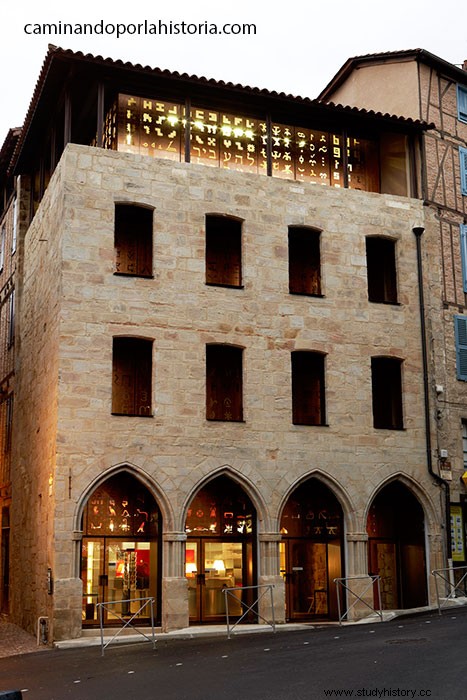
Exterior of the Champollion Museum

Upper terrace of the Champollion Museum
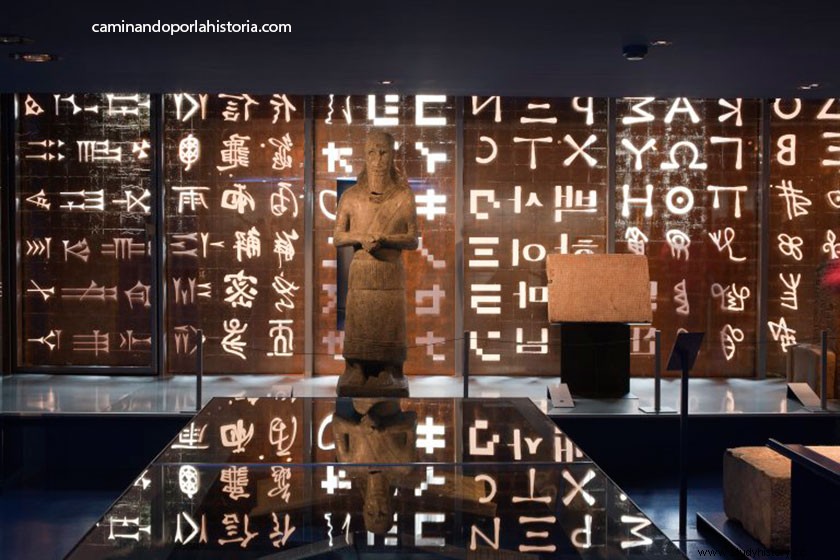
One of the rooms of the Musée Champollion
To find out its opening hours, I invite you to visit the museum's official website:www.musee-champollion
